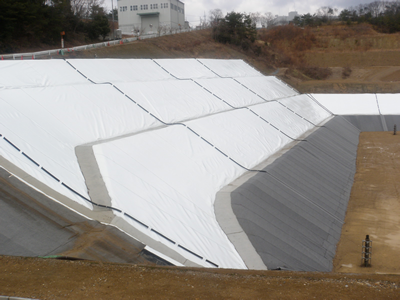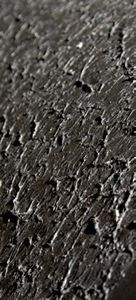
By Robert Denis – For the past 15 years or so, polyethylene geomembrane material specifications (test methods, test properties and testing frequencies) have essentially been regulated by the Geosynthetic Institute (GSI). This has enabled the worldwide endorsement of these geomembranes by government regulators and has resulted in wide-scale use.
Polyethylene geomembranes have indeed become the material of choice of every industrialized nation when it comes to environmental protection applications. As of this day, the famed GRI-GM13 (est. 1997), GRI-GM17 (est. 2000) and GRI-GM-19 (est. 2002) are still considered as the most stringent set of requirements for optimal polyethylene geomembrane quality.
But in spite of having gone through numerous revisions throughout the years, these quintessential statutory monuments only ponder the Trojan Horse of the polyethylene geomembrane modern day realm; traditional and basic black polyethylene liners still considered as such from their inherent mechanical, endurance and longevity properties as witnessed from their inception over 30 years ago.
For a while now there’s been more, as inceasingly harsher environmental application requirements have challenged the limits of the Trojan Horse itself, originally designed to withstand half-lives of minimum 200 years in municipal waste landfill environments. A slew of modern polyethylene geomembranes have hence been developed with inherent material properties going over and above GRI-led industry-standards.
Custom-designed products originally developed for unique applications are now being offered to the engineering community at large: products with superior endurance properties from enhanced resin formulations, products with superior friction properties from manufacturing developments, and products with maximized installation rates.
Materials with these characteristics now pervade Solmax’s catalogs, for example.
EXTENDED PRODUCT LINES: POLYETHYLENE GEOMEMBRANES

In addition to textured polyethylene geomembranes with characteristic peak friction angles of 200 to 250, the author’s company, which is an international manufacturer, also offers a wide range of enhanced friction products. These include Rough Textured Finish (RT) with peak friction angles ranging between 250 and 300 and Extra Rough Textured Finish (XRT) with peak friction angles ranging between 300 and 350. These variations, which typify the direction in the global polyethylene geomembrane field, accommodate most non-cohesive and cohesive soil natures and conditions.
Electrically conductive polyethylene geomembranes (e.g., Solmax Conductive Finish) enable complete geo-electrical leak surveys during and after construction with all industry-approved methods (puddle method, water lance method, water covered method, and soil covered method). The greatest advantage in using electrically conductive geomembranes as opposed to other electrically conductive mediums such as electrically conductive subgrades, electrically conductive geotextiles and geosynthetic clay liners (GCL), is that intimate contact between the geomembranes and the underlying mediums is not necessary since the geomembrane itself is actually carrying the electrode on its underside by way of a thin, co-extruded, electrically conductive carbon black layer.
The author’s company has also developed an enhanced endurance properties line of product (Solmax Premium Series) to withstand the harshest environmental conditions through extensive collaborative research with its clients and suppliers. The Premium Series are highlighted with enhanced anti-oxidant content with resulting increased geomembrane weathering resistance and longevity.
REFLECTIVE AND WHITE GEOMEMBRANES
Furthermore, we now offer reflective polyethylene geomembranes (Solmax Reflective Finish) to facilitate site installation by minimizing thermal expansive waves. By the same token, white geomembranes also enable safer backfilling operations from less mechanical damages, better subgrade intimate contact, reduction of subgrade desiccation and easier visual inspection. By virtue of their typically lower sheet temperatures under solar irradiation, white geomembranes longevity is prolonged as anti-oxidant depletion rates are temperature dependent. Last but not least, all these new features may actually be combined into a single versatile product for most product thicknesses.
As any other engineering materials, geomembranes need to be scientifically dimensioned in quantitative fashion in accordance with sound engineering principles, algorithms, methodology as well as appropriate and adequate experience which above all involves identifying, understanding and interpreting all constraints acting upon the geomembranes as building elements of a design.
THE TAKE AWAY: ULTIMATE SOLUTIONS
By understanding and quantifying the constraints, engineers derive specifications for the limits within which a viable selection of geomembranes will be retained. As usual, multiple reasonable solutions exist. Engineers must evaluate the different design choices on their merits and choose the solution that best meets their requirements.
Modern-day polyethylene geomembranes now enable ultimate solutions.
Robert Denis is Vice President – Product Engineering for Solmax, www.solmax.com. A version of this article appeared in Solmax’s “Mining Solutions” magazine. Download a copy of the original article here.











